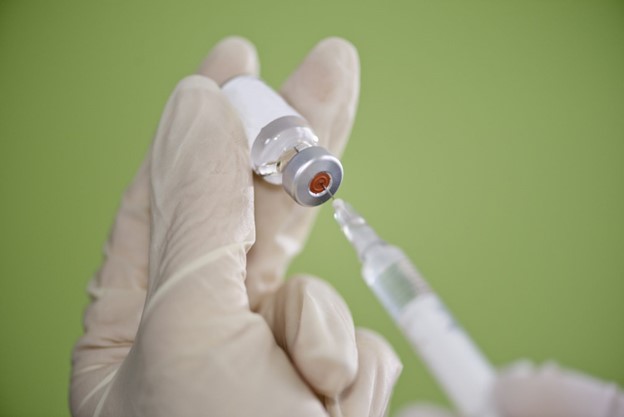The nurse is admitting a child with rheumatic fever. Which therapeutic management should the nurse expect to implement?
Imposing strict bed rest for 4 to 6 weeks.
Administering corticosteroids if chorea develops.
Administering penicillin.
Avoiding salicylates (aspirin).
The Correct Answer is C
The correct answer is choice C: Administering penicillin.
Choice A rationale:
Imposing strict bed rest for 4 to 6 weeks. This choice is not the most appropriate therapeutic management for rheumatic fever. While rest is important during the acute phase, strict bed rest for 4 to 6 weeks is excessive and could lead to physical deconditioning and psychological distress for the child.
Choice B rationale:
Administering corticosteroids if chorea develops. This choice is relevant to the management of rheumatic fever but is not the primary treatment. Chorea is a movement disorder that can occur as a complication of rheumatic fever. Corticosteroids may be used to manage chorea symptoms, but they are not the mainstay of treatment for rheumatic fever itself.
Choice C rationale:
Administering penicillin. This is the correct choice. Penicillin is the mainstay of treatment for rheumatic fever. It helps eradicate the group A streptococcal infection that triggers the inflammatory response leading to rheumatic fever. Penicillin is essential to prevent further complications such as rheumatic heart disease.

Choice D rationale:
Avoiding salicylates (aspirin). This choice is also relevant to the management of rheumatic fever. Salicylates, including aspirin, are used to relieve symptoms and reduce inflammation. However, in children with acute rheumatic fever, salicylates are contraindicated due to the risk of developing Reye's syndrome, a serious condition that affects the brain and liver.
Nursing Test Bank
Naxlex Comprehensive Predictor Exams
Related Questions
Correct Answer is A
Explanation
The correct answer is choice A: Rotavirus.
Choice A rationale:
Rotavirus is a viral pathogen that frequently causes acute diarrhea in young children. It is highly contagious and is responsible for a significant portion of severe diarrhea cases worldwide. Rotavirus infections are most common in infants and young children, and they can lead to dehydration, especially in developing countries where access to clean water and proper sanitation might be limited.

Choice B rationale:
Salmonella organisms can cause food poisoning and gastrointestinal infections that lead to diarrhea. However, they are more commonly associated with bacterial infections rather than viral-induced acute diarrhea.
Choice C rationale:
Shigella organisms are also bacterial pathogens that cause diarrhea, specifically bacillary dysentery. While they can cause severe diarrhea, they are not the viral pathogen typically responsible for acute diarrhea in young children.
Choice D rationale:
Giardia organisms are parasites that can cause gastrointestinal infections leading to diarrhea. However, they are not viruses, and they are less commonly associated with acute diarrhea in children compared to rotavirus.
Correct Answer is A
Explanation
Choice A rationale:
Calcium carbonate is often given with meals to individuals with chronic renal disease, especially those on dialysis. One of the primary purposes is to bind dietary phosphorus in the gastrointestinal tract. In chronic renal disease, the kidneys are less effective at filtering out excess phosphorus from the blood, leading to elevated phosphorus levels (hyperphosphatemia). Elevated phosphorus levels can contribute to bone and mineral disorders in these patients. Calcium carbonate forms insoluble calcium phosphate complexes with dietary phosphorus, preventing its absorption and facilitating its elimination from the body through the feces.
Choice B rationale:
While calcium carbonate can interact with fat-soluble vitamins like vitamin D, the primary reason for administering it to individuals with chronic renal disease is to manage phosphorus levels. Calcium carbonate can bind phosphorus and prevent its absorption, which is particularly important for patients with compromised kidney function.
Choice C rationale:
Stimulating appetite is not a primary purpose of administering calcium carbonate to children with chronic renal disease. The main focus is on managing phosphorus levels and preventing complications associated with hyperphosphatemia.
Choice D rationale:
Preventing vomiting is not a primary purpose of giving calcium carbonate to children with chronic renal disease. Calcium carbonate is typically used to manage phosphorus levels and complications related to hyperphosphatemia in this population.
Whether you are a student looking to ace your exams or a practicing nurse seeking to enhance your expertise , our nursing education contents will empower you with the confidence and competence to make a difference in the lives of patients and become a respected leader in the healthcare field.
Visit Naxlex, invest in your future and unlock endless possibilities with our unparalleled nursing education contents today
Report Wrong Answer on the Current Question
Do you disagree with the answer? If yes, what is your expected answer? Explain.
Kindly be descriptive with the issue you are facing.
